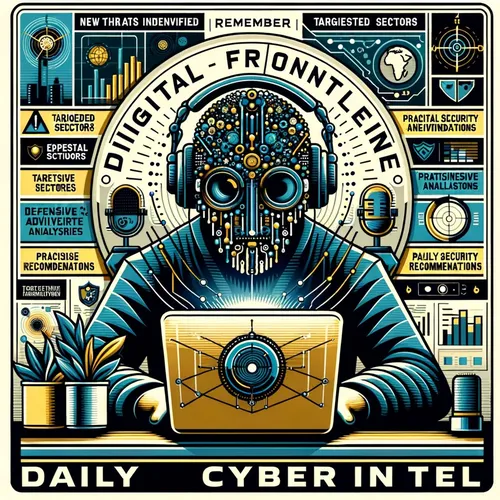China's Cyber Tentacles: From Water Taps to AI Chips, DEF CON Fights Back
- Author
- Quiet. Please
- Published
- Sun 10 Aug 2025
- Episode Link
- https://www.spreaker.com/episode/china-s-cyber-tentacles-from-water-taps-to-ai-chips-def-con-fights-back--67322721
This is your Digital Frontline: Daily China Cyber Intel podcast.
Hey listeners, Ting here, your ever-curious chronicler of the Digital Frontline, where we stare right into the blinking eyes of the China cyber nexus. Forget the vague Hollywood hacker—think state-backed Volt Typhoon, actual DEF CON volunteers, small-town water utilities, and zero-day exploits hotter than a Sichuan pepper.
Let’s hit the biggest headline first: In the past 24 hours, security pros at DEF CON and allies from projects like the Franklin initiative have been playing digital whack-a-mole with Beijing’s favorite game: infiltrating critical US infrastructure. The new scramble is around US water utilities, and not just the obvious big-city targets—no, no, no. Chinese operators are trawling through smaller municipal water systems, the kind that most people don’t even realize run next to air bases, hospitals, or logistics hubs with big military value. Why take down Manhattan’s taps when you can cut water to a rural trauma center serving an army fort? Security lead Braun explained that this “pre-positioning” is about getting deep into networks today—so they can control or destroy at a moment’s notice, whenever the geopolitics get spicy. The Franklin project is rallying hackers to scale up free security audits at warp speed, but funding is a bottleneck, and with 50,000 water utilities in the US, the finish line isn’t even visible.
Now, if you thought things were quieter in the software world, put that thought back in the box. According to coverage in The CyberWire and AOL, a zero-day, tracked as CVE-2025-53770, just detonated in Microsoft SharePoint Servers, and Microsoft rushed out patches after reports surfaced of Chinese-affiliated actors actively exploiting it. Some unlucky enterprises found out the hard way, spotting Chinese hands rummaging through their SharePoint data vault before any alarms went off. If you’re running on-prem SharePoint, patch it yesterday.
Meanwhile, the Justice Department dropped the news that two Chinese nationals were arrested for smuggling Nvidia AI chips, underscoring the fever over US AI chip controls. Beijing is pushing Washington hard to relax these export rules, since companies like Huawei desperately need high-bandwidth memory chips for their own AI ambitions. No surprise—AI is the new cyber arms race, and every byte counts.
Let’s slip over to Taiwan, which, according to reports in Taiwan News, remains ground zero for China’s hybrid digital warfare: mass phishing, political interference, and relentless cyberattacks target every sector from voting systems to government apps. It’s a sobering reminder that the best defense isn’t just firewalls, but combining technical prep with narrative resilience—China’s psychological warfare is aimed just as much at hearts and minds as at data.
So what do you do about all this? First, patch everything, starting with SharePoint and Exchange—there are new advisories out every single day. Second, if you’re running a water utility, join the Franklin project or at minimum, scan your operational devices for known vulnerabilities. Third, use strong authentication everywhere—China’s teams almost always go for weak passwords, outdated firmware, and unmonitored endpoints. Finally, monitor logs aggressively: most detected breaches are found not by magic, but by boring persistence and looking twice at weird traffic, even from the remote boondocks.
Remember, paranoia is a team sport and the only way to stay ahead of the Digital Dragon is to talk, patch, and question everything you think is safe.
Thanks for tuning in to Digital Frontline with Ting—subscribe wherever you get your infosec fix, and keep your bits untangled. This has been a quiet please production, for more check out quiet please dot ai.
For more http://www.quietplease.ai
